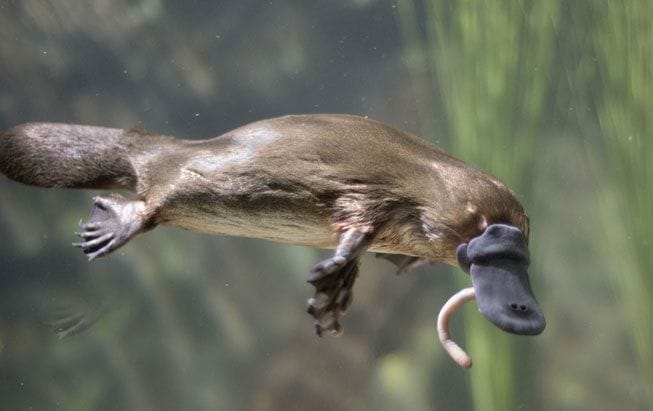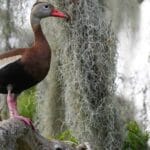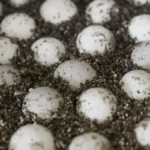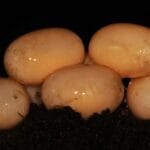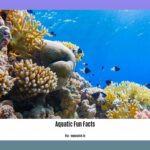Get ready to dive into the weird and wonderful world of the platypus! These creatures are living proof that nature loves to throw us curveballs. Picture a mammal that lays eggs, swims like a pro, and has a quack that sounds like a duck. That’s the platypus for you, a creature that will leave you scratching your head in amazement. Brace yourself for some mind-boggling facts that might make you wonder if evolution was having a laugh when it created these aquatic oddballs.
Fun Facts About the Platypus
Platypuses are truly bizarre creatures. They boast a medley of seemingly mismatched features that make them look like they were pieced together from different animals! But this hodgepodge of characteristics is what makes them so fascinating. Let’s dive into some fun facts about these quirky critters:
Packing a Punch: Venomous Spurs
You wouldn’t expect an animal that looks cuddly to be venomous, but male platypuses can deliver a painful surprise! They have sharp spurs on their hind legs connected to venom glands. This venom isn’t usually deadly to humans, but it can cause excruciating pain and swelling. Some experts believe the venom is primarily used for competition between males during mating season, but we still have a lot to learn about how they use it in the wild.
Sensing with Electricity: Electroreception
Platypuses are practically superheroes underwater, equipped with a sixth sense called electroreception. This remarkable ability allows them to detect the faint electrical fields generated by the muscle movements of their prey. Imagine being able to sense the electrical impulses of a shrimp hiding in murky water! This superpower makes them incredibly efficient hunters, even in environments with poor visibility.
Egg-Laying Mammals: Monotremes
Here’s a head-scratcher: platypuses are mammals, but they lay eggs! They belong to a small and ancient group called monotremes, which share this unique characteristic. After laying her eggs, the mother platypus keeps them warm and safe in a burrow. Once the eggs hatch, the little platypus babies, called “puggles” (adorable, right?), rely on their mother’s milk for nourishment.
Glowing in the Dark: Biofluorescence
Hold onto your hats because this next fact is super cool! Scientists recently discovered that platypuses glow under UV light – they’re biofluorescent! When exposed to ultraviolet light, their fur emits a greenish-blue glow. Researchers are still trying to understand why they have this ability, but some theories suggest it might be related to camouflage or communication, especially in low-light conditions.
A Stomachless Wonder: Unique Digestive System
The platypus’s oddities extend to their insides as well! Surprisingly, they don’t have a true stomach like most mammals. Instead, their esophagus connects directly to their intestines. To grind up their food, they use gravel and small stones stored in cheek pouches – talk about a crunchy diet! This unusual digestive system has puzzled scientists for years and is still an active area of research.
A Coat of Many Friends: Symbiotic Algae
Did you know that platypuses might have tiny algae buddies living in their fur? Some studies suggest that certain types of algae thrive in the moist environment of a platypus’s fur coat. While more research is needed to confirm this relationship, it’s possible that these algae provide benefits like UV protection or camouflage to their platypus hosts.
Electric Chit-Chat: Social Interactions
It turns out that platypuses don’t just use their electroreception for hunting; it also plays a role in their social lives. They communicate with each other by emitting electric signals, which can vary in strength and pattern. Scientists believe these electric “conversations” might be used to attract mates, establish dominance, or defend territories.
Endless Enigma: Mystifying Mammals
From their venomous spurs and egg-laying habits to their biofluorescent fur and electric senses, platypuses are a constant source of wonder and scientific inquiry. They defy easy categorization, showcasing a unique blend of mammalian and reptilian characteristics. As we continue to study these peculiar creatures, we are sure to uncover even more fascinating secrets about their biology and behavior. So next time you think of a platypus, remember that there’s always more to discover about these amazing animals!
What are 10 facts about the platypus?
We’ve already talked about how platypuses look like someone took parts from different animals and mashed them together, right? Well, buckle up because their weirdness goes way beyond their looks! Here are 10 more crazy-cool facts about these Aussie oddities:
- Egg-Laying Mammals: Okay, we know, we already mentioned this. But it’s just so wild it deserves repeating! Most mammals give birth to live young, but platypuses are like, “Nah, we’re gonna lay eggs like the reptiles.” It’s a throwback to their ancient ancestors and makes them totally one-of-a-kind in the mammal world.
- Built for Water Life: Platypuses are like the ultimate swimmers, spending half their lives in rivers and streams. They have these super-dense, waterproof fur coats to keep them warm even in chilly water. Plus, their bodies are streamlined like a torpedo, and their webbed feet are like built-in paddles. Talk about being perfectly adapted!
- Venomous Spurs (Ouch!): Here’s where things get a little dangerous. Male platypuses have these sharp spurs on their back legs that are actually venomous! Don’t worry, it’s not usually deadly to humans, but getting jabbed by one would definitely ruin your day. Scientists think they mostly use these spurs to fight off other males during mating season.
- Electric Sense for Hunting: Get this – platypuses don’t even have stomachs! And they don’t use their eyes much underwater, either. So how do they find food? They use electroreception, which is like a sixth sense. They can actually detect the tiny electrical fields given off by shrimp, worms, and other yummy critters hiding in the mud.
- Grinding Food Without Teeth: Okay, so no stomach, poor eyesight, but they still gotta eat, right? Platypuses have these cheek pouches where they store food AND little pebbles they pick up from the riverbed. Then, they rub the pebbles together to grind up their food since they don’t have any teeth. It’s like their own little built-in food processor!
- They Glow Under Blacklights!: Yep, you read that right. When you shine a UV light on a platypus, their fur emits this crazy cool greenish-blue glow. It’s called biofluorescence, and scientists are still trying to figure out why they do it. Some theories suggest it might be for camouflage or even communication in low light.
- Algae Roommates: Remember that super-dense fur we talked about? Well, it’s so thick and moist that some types of algae actually live in it! These algae might help give the platypus extra camouflage and maybe even some protection from harmful UV rays. It’s a win-win situation!
- Electric Chat Sessions: You won’t hear a platypus chatting it up – they don’t make much noise at all. But they can “talk” to each other using electrical signals! These signals are mostly used during mating season, but scientists are still studying how complex their communication might be.
- Aussie Legends: Platypuses are so unique that they hold a special place in Aboriginal Australian cultures. They feature in many traditional stories and beliefs, often as trickster spirits or symbols of connection to the natural world.
- Facing Threats: Sadly, these quirky critters are facing some serious challenges these days. Habitat loss due to human development and the effects of climate change are putting a strain on platypus populations. Conservation efforts are underway, but we all need to do our part to help protect this one-of-a-kind species!
So there you have it! The platypus: part mammal, part reptile, part electric superhero, part glowing mystery. They’re a shining example of just how weird and wonderful the natural world can be, and they definitely deserve our admiration and protection. Who knows what other secrets these evolutionary enigmas might hold!
What makes a platypus unusual?
So, we’ve already established that platypuses are pretty unique. I mean, they’re like the puzzle pieces of the animal kingdom – a little bit of this, a little bit of that, and a whole lot of “What on earth?!” Let’s dive deeper into what makes these creatures so fascinating.
First off, let’s talk about their most famous quirk – laying eggs. You heard right, eggs. In a world dominated by mammals giving birth to live young, platypuses march to the beat of their own drummer (or should we say, layer?). They’re one of only two mammal groups on the entire planet that haven’t quite given up on the whole egg-laying thing (the echidnas are the other group, in case you were wondering).
But wait, there’s more! Imagine a creature with a duck’s bill, a beaver’s tail, and fur that wouldn’t look out of place on an otter. Now, stop imagining because that creature is very real, and it’s called a platypus. It’s like nature couldn’t decide which animal to create, so it threw all the ideas into a blender and hit “pulse.”
And if their looks weren’t enough to make them stand out in a crowd, platypuses also come equipped with some pretty impressive, albeit slightly terrifying, accessories. Male platypuses have venomous spurs on their hind legs – a rare feature in the mammal world. Don’t worry, though, these spurs are mainly used for defense or during mating season squabbles.
But perhaps the most mind-boggling feature of the platypus is its ability to “see” underwater with its eyes closed. Okay, not literally “see,” but they have electroreceptors in their bills that allow them to detect the faint electrical fields generated by the muscle movements of their prey. Talk about a sixth sense!
Scientists believe these electroreceptors, along with their sensitive bills, help platypuses navigate murky waters and locate tasty treats like insects, shellfish, and worms on the riverbed.
The more we learn about platypuses, the more questions seem to arise. There’s still so much we don’t know about these incredible animals, and ongoing research continues to reveal new and exciting insights into their biology, behavior, and evolution. So next time you think about unusual animals, remember the platypus – a living testament to the incredible diversity and wonder of the natural world.
What are some interesting facts about the duck-billed platypus?
Picking up where we left off, let’s dive deeper into the world of the duck-billed platypus. These creatures are truly remarkable and never fail to surprise us.
Picture this: a furry animal that seems like a mash-up of a duck, a beaver, and maybe even an otter! That’s the platypus for you. Found only in eastern Australia, including Tasmania, these guys are more than just a pretty (or should we say, unusual) face. They’re one of the few mammals on Earth that lay eggs instead of giving birth to live young! This quirky trait makes them one of the two remaining types of monotremes – a group so ancient that it gives us a glimpse into the early evolution of mammals.
Now, about that “duck-billed” part. Unlike a duck’s hard beak, a platypus’s bill is actually soft and rubbery. And it’s not just for show. This amazing bill is packed with special sensors called electroreceptors. Imagine having a sixth sense! That’s what these receptors are like, allowing the platypus to detect the faint electrical signals produced by its prey underwater – think tasty insect larvae and worms hiding in the mud.
And if that wasn’t cool enough, male platypuses have a secret weapon: venomous spurs on their hind legs! It’s thought to be mainly used for defense against predators or during mating season tussles with other males. Don’t worry, though, while a platypus sting can be incredibly painful for humans, it’s very rarely fatal.
When they’re not using their electro-sensing bills or showing off their spur skills, platypuses are surprisingly social. They live in groups called “mobs” and communicate with each other through a series of growls, hisses, and even clicks. Talk about a chatty bunch!
Sadly, these fascinating creatures are facing some serious challenges. Habitat loss, pollution, and climate change all pose threats to their survival. Scientists are working hard to learn more about platypuses and find ways to protect them for future generations.
So, there you have it! The duck-billed platypus: a bizarre, beautiful, and utterly captivating creature that reminds us just how diverse and incredible the animal kingdom truly is.
What is an interesting fact about the platypus life cycle?
We’ve already talked about how unusual platypuses are. I mean, they’re basically a mashup of different animals – a furry beaver tail, a duck bill, and webbed feet? Talk about weird and wonderful! But their life cycle? That’s where things get really interesting.
One of the most mind-blowing things is that platypus moms actually lay eggs. Yep, you read that right – eggs! It’s like something out of a fantasy novel. These eggs are soft and leathery, kind of like reptile eggs, and the mama platypus keeps them warm and safe in a burrow. This makes them one of the very few mammals on Earth that lay eggs—most mammals give birth to live young.
Once the little “puggles” (that’s what baby platypuses are called – adorable, right?) hatch from their eggs, they’re pretty helpless. They rely completely on their mom for milk, which, get this, isn’t from nipples like other mammals. Instead, platypus moms “sweat” milk from special patches on their belly! The puggles drink it up right from their mom’s fur. How cool is that?
It takes about four months for the puggles to grow up enough to leave the burrow and start exploring the world on their own. And even though they’re out on their own, they still have a lot of growing to do! It takes a couple of years for them to reach their full size and become adults.
Scientists are still uncovering the mysteries of the platypus life cycle, but what we do know is truly fascinating. It’s a testament to the incredible diversity of life on our planet and how much there is still left to discover!
What is the superpower of the platypus?
We’ve already talked about some cool things about platypuses, but let’s dive into the superpower that makes them truly extraordinary. Imagine having a sixth sense, a way to perceive the world beyond the usual sight, smell, taste, touch, and hearing. Well, platypuses don’t have to imagine!
Feeling the Buzz: Electroreception
Platypuses have a superpower that seems like something straight out of a comic book: electroreception. Remember those electroreceptors in their bills we mentioned? Those are the key. These special sensory cells allow them to detect the faint electrical fields created by the muscle movements of their prey. Imagine being able to sense the heartbeat of a shrimp hiding in the mud at the bottom of a river! That’s what platypuses can do, making them incredibly effective hunters, especially in murky water where sight isn’t much help.
Packing a Punch: Venomous Spurs
Superheroes often have unique weapons, and male platypuses are no exception! They possess venomous spurs on their hind legs, but here’s the catch—they’re not for hunting. Think of it more like a security system for when they feel threatened, particularly during mating season when competition for mates heats up. While the venom isn’t typically deadly to humans, it’s definitely not something you want to experience. We’re talking intense pain, swelling, and a healthy dose of respect for these quirky creatures.
More Than Just a Bill: Sensory Masterpiece
The platypus’s duck-like bill is arguably its most recognizable feature, and it’s far more than just a cute face. This bill is a marvel of sensory perception. Imagine a combination of incredibly sensitive skin and a super-powered nose, all packed into one flexible, rubbery bill. That’s what the platypus is working with. They use this extraordinary sense of touch to feel their way around underwater, locate food, and even differentiate between different textures.
Nurturing Mothers: A Different Kind of Superpower
While not as flashy as electroreception or venomous spurs, the maternal instincts of platypuses are a superpower in their own right. Unlike most mammals, platypus moms don’t have pouches to carry their young. Instead, they dig elaborate burrows, creating safe and cozy nests where they nurse and care for their babies until they’re old enough to venture out on their own. Talk about dedication!
The Platypus: A Work in Progress
What’s even more fascinating is that we’re still learning about these incredible creatures. Scientists are constantly making new discoveries about their biology, behavior, and the intricacies of their superpowers. While we’ve unlocked some of their secrets, the platypus continues to be one of the most mysterious and captivating animals on our planet.
What are some fun facts about platypus eggs?
So, we’ve been talking about platypuses and how cool they are, but did you know their eggs are super interesting too? They’re not your typical bird eggs! Let’s dive into some fun facts about these weird and wonderful creations.
For starters, forget hard shells! Platypus eggs are actually soft and leathery, kind of like a turtle egg. And they’re pretty small, only about half an inch across – imagine a grape, and you’re in the ballpark.
Now, where do these eggs hang out? Well, mama platypus gets busy building a burrow in the riverbank. It’s like a cozy little nursery where she lays her eggs, usually just one or two at a time. She’s a dedicated mom too, keeping those eggs warm for about 10 days by curling her body around them. Talk about a warm hug!
When the eggs finally hatch, what emerges are these tiny, helpless little things called “puggles” (how cute is that name?!). Now, here’s the thing: puggles are born blind and without any fur, so they’re totally dependent on their mom.
And get this – platypus moms don’t have nipples! Instead, they secrete milk from pores on their skin, and the puggles basically lap it up. It’s a pretty wild way to nurse, but hey, it works for them!
Here’s another fascinating tidbit – platypus eggs actually glow under UV light! It’s called biofluorescence, and scientists are still trying to figure out exactly why they do that. Isn’t that amazing?
There you have it – platypus eggs are truly one-of-a-kind! They’re a testament to the incredible diversity of the animal kingdom and a reminder that there’s always something new to learn about the world around us.
What are platypuses famous for?
You know how some animals are just so weird and wonderful that you can’t help but be fascinated by them? Well, the platypus definitely tops that list! They’re like a puzzle put together with pieces from all sorts of different animals, and that’s a big part of what makes them so famous.
- They lay eggs – but they’re mammals! This is probably the most well-known thing about platypuses. Most mammals give birth to live young, but platypuses, along with their spiky cousins the echidnas, do things a bit differently. They lay soft-shelled eggs, which is pretty wild for an animal that also has fur and produces milk!
- Talk about a mixed bag! Where do we even start with their looks? They’ve got this wide, rubbery bill that looks like it belongs on a duck, webbed feet perfect for paddling through the water, and a thick, beaver-like tail for steering. And as if that wasn’t enough, the males have venomous spurs on their hind legs! Don’t worry too much, though, they mainly use those for competing with each other during mating season.
- They’ve got a sixth sense (sort of). Ever heard of electrolocation? It’s like something out of a superhero movie! Platypuses have these incredible sensors on their bills that can detect the faint electrical fields given off by the muscle movements of their prey – things like shrimp, worms, and insects. This is super helpful when they’re hunting in murky water where it’s hard to see.
- They’re Aussie icons! Platypuses are native to eastern Australia, and they’re a big deal down under. You’ll find them on the Australian 20-cent coin, and they’ve even been mascots for national events. Aboriginal Australians have a deep respect for the platypus, and it features prominently in their traditional stories and culture.
- But wait, there’s more! Scientists are still learning new things about platypuses all the time. Did you know that their milk contains a special protein that could potentially help fight antibiotic resistance? And their venom, while not deadly to humans, might hold clues for developing new pain relief medications. Pretty cool, huh?
Platypuses are living proof that nature is full of surprises. They’re bizarre, they’re amazing, and they remind us that there’s always something new and exciting to discover in the world around us.
What is a platypus’s favorite food?
So, we’ve talked about how platypuses find their food, but what exactly do these quirky creatures like to munch on? You might be surprised to learn that their diet mainly consists of what they can snag from freshwater streams and rivers. Think along the lines of creepy crawlies and other small water-dwelling critters.
Their absolute favorite food, though? Freshwater yabbies! If you’re not familiar, yabbies are basically like small lobsters or crayfish. Platypuses just can’t get enough of them! And who can blame them? Yabbies are packed with nutrients, making them a perfect choice for a growing platypus.
Now, you might be wondering how platypuses find all these tasty treats in often murky water. Well, this is where things get even more interesting. Remember how we mentioned their unique bills? Well, those bills are like built-in metal detectors! They can sense the tiny electrical impulses that all animals give off, even if they’re hiding under rocks or in the mud.
It seems platypuses are actually quite picky eaters! Instead of just chowing down on anything they come across, research suggests they actually prefer certain types of insects and crustaceans. This makes sense, as different prey offer different nutritional values. By being selective, platypuses can make sure they’re getting the most bang for their buck, so to speak, with every meal.
Scientists are still uncovering new information about the feeding habits of platypuses. It’s a fascinating field of study, and each new discovery seems to highlight just how unique and remarkable these creatures really are.
What are some facts about platypuses for Grade 6?
Platypuses are like those friends who are a little quirky but totally awesome! They’re a mashup of different animals, kind of like a real-life creature from a fantasy book. Imagine a furry little mammal, but with a bill like a duck – yep, you read that right, a duckbill! And it gets even weirder: these guys have webbed feet for swimming, similar to a duck, but their bodies are sleek and streamlined, more like an otter.
And hold on tight because this next part is wild – platypuses are venomous! But don’t worry, it’s mainly the males that have a spur on their hind legs that can deliver a painful sting, mostly used to fight off other platypuses during mating season.
Now, remember how we talked about their duckbill? It’s not just for show! Hidden inside are these super-sensitive receptors that can actually detect tiny electrical fields produced by other animals. It’s like a sixth sense that helps them find tasty shrimp, worms, and insects hiding in murky water. How cool is that?
Platypuses are also super interesting because they lay eggs, just like birds! But here’s the thing: even though they lay eggs, they are still mammals. This means that after the eggs hatch, the mothers feed their babies milk, just like other mammals.
Oh, and one more thing – platypuses are kind of a big deal in Australia! They’re like little celebrities down under, even featured on their 20-cent coins.
So, there you have it! Platypuses are truly one-of-a-kind creatures: part-duck, part-otter, all-around amazing!
Can you touch a platypus?
So, we’ve talked about how cool platypuses are, but what about getting up close and personal? Can you touch one? Well, here’s the thing – it’s really best to admire these amazing creatures from afar. While they might look cuddly, there are a couple of reasons why petting a platypus is not a good idea.
First off, those cute little guys can pack a punch! Well, the males can, at least. They have these spurs on their back legs that are loaded with venom. Think of them like hidden daggers! While this venom isn’t strong enough to be deadly to humans, getting stung would be far from pleasant. Imagine a sharp pain and your hand swelling up like a balloon – ouch! This venom is mainly used during mating season, so it’s like a way for the males to sort out their differences.
But it’s not just the venomous spurs you need to watch out for. Platypuses also have sharp claws! These are super useful for digging burrows and hunting for tasty treats in the mud. However, those same claws could give you a nasty scratch if you’re not careful.
And there’s one more thing to consider: platypuses have this incredible ability called electrolocation. Basically, they can sense electrical signals in the water, which helps them find food and navigate their surroundings. Now, imagine you reach out to touch a platypus – your touch would probably feel like a sudden jolt of electricity to them! It would be pretty startling, right? They might react defensively, and you really don’t want to be on the receiving end of that.
So, while it’s tempting to want to touch a platypus, it’s much safer and kinder to simply enjoy watching them from a distance. Remember, respecting wildlife means observing them without interfering with their natural behaviors. Let’s appreciate these fascinating creatures for the amazing animals they are but keep our hands to ourselves!
Did you know that hedgehogs can swim? And that beagles can howl? Discover more fascinating facts about these adorable creatures by clicking on the links below:
- Click here to learn some fun facts about hedgehogs: fun facts about hedgehogs
- Click here to learn some facts about beagles: facts about beagles
- Red Cloud, NE: Discover Willa Cather’s Legacy - April 11, 2025
- Remember Old Social Media Sites? Their Rise and Fall - April 11, 2025
- How many days till Feb 3?Accurate Countdowns & Tools - April 11, 2025
